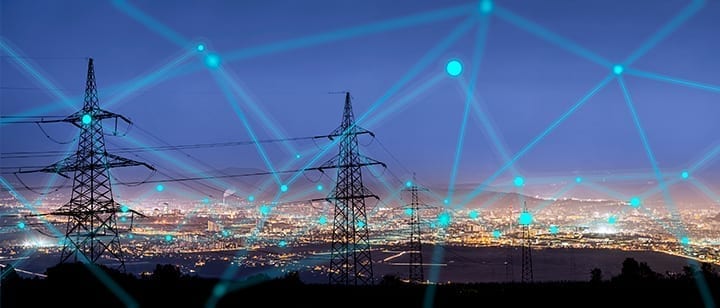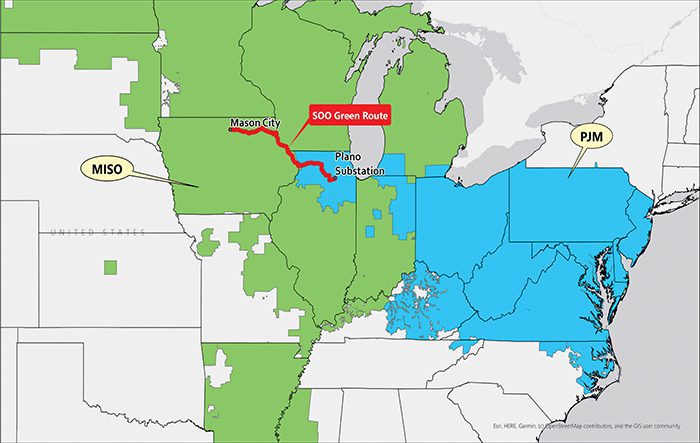The Future Electric Grid: How HVDC Could Transform the U.S. Power System
The post The Future Electric Grid: How HVDC Could Transform the U.S. Power System appeared first on POWER Magazine.

The U.S. electric grid is a complex web of interconnected power lines. It functions remarkably well, considering that it is a constant work in progress. Yet, what has served adequately in the past may not be ideal for the future. As more renewable energy is added to the grid and traditional central power stations retire, getting electricity where it needs to go presents a significant challenge. Experts suggest major investment is needed, including in high-voltage direct-current (HVDC) interconnections.
It's no secret that the mix of power generation resources is changing in the U.S. and has been for more than a decade. Coal-fired generation peaked in the U.S. in 2007, when coal generators produced more than 2,000 TWh of electricity. Since then, coal-fired production has declined significantly (Figure 1). In 2020, coal accounted for less than 775 TWh of electricity. The trend lower is likely to continue due not only to climate concerns, but also because of poor economics-low-cost natural gas-fired generation, and constantly decreasing costs for wind and solar power, have been pushing coal generators down the dispatch queue in many competitive markets.
 |
1. This chart shows how the power mix has changed in the U.S. over the past 20 years. Once the undisputed king of power generation, coal-fired production decreased more than 60% in the U.S. from 2007 to 2020, putting it behind both natural gas and nuclear last year. Meanwhile, wind and solar generation have been growing steadily-and that's likely to continue. Source: U.S. Energy Information Administration |
As the U.S. power mix evolves, with more wind and solar generation resources added, and traditional central power station assets retired, transmission system requirements also change. Is the existing grid ready to accommodate the shift toward renewables? Some experts say no.
I think we're not well-prepared at all," said Pablo Ruiz, president and CTO of NewGrid, a company that provides grid congestion monitoring and mitigation services to transmission operators and utilities. Ruiz made the statement while participating in a breakout session titled Transmission System of the Future" during the U.S. Department of Energy's Advanced Research Projects Agency-Energy (ARPA-E) Innovation Summit on May 26. We need to change it from what is today a static asset with limited monitoring and low utilization to a well-monitored, flexible, adaptive grid, if we want to realize that vision in a timely manner," he said.
Another panelist, Aaron Bloom, director of New Product Research and Development with NextEra Analytics, said some of the challenges can be overcome, at least in the short term, using newly developed software. One of the things that we have going for us is we have a lot of latent capability in the grid that we have today, and that can be leveraged through software that helps us better use the assets that we have," he said.
In the long term, however, Bloom suggested a well-conceived plan for the future would be crucial. We've got to figure out how we [can] use our land more efficiently, and whether that's transportation right of ways or existing transmission right of ways that could have more throughput, we really need to open up these opportunities and take some really progressive approaches to how we do transmission planning, and kind of [emulate] how they do transmission planning in the rest of the world," he said.
Leveraging Existing Right-of-Way CorridorsOne project that is basically doing what Bloom suggested is the SOO Green HVDC Link. SOO Green is a company owned by investment funds managed by Copenhagen Infrastructure Partners, Siemens Energy, and Jingoli Power. The SOO Green HVDC Link will connect the company's converter station in northern Iowa to its Illinois converter station just west of Chicago, roughly 350 miles away (Figure 2). It will use paired 525-kV cross-linked polyethylene-class cables installed underground primarily along existing railroad rights-of-way to make the connection. Minneapolis, Minnesota-based Direct Connect Development Company is heading the project.
 |
2. The SOO Green high-voltage direct-current (HVDC) Link will connect a MISO terminal at the Killdeer Substation, southwest of Mason City, Iowa, with a PJM terminal at the Plano Substation, in Yorkville, Illinois. The link will have a capacity of about 2 GW. Courtesy: Direct Connect Development Company |
During the ARPA-E session, Trey Ward, CEO of Direct Connect, provided specifics about the project. [SOO Green] is the first transmission project in the U.S., that's going to be co-located underground along railroads and highways for its entire 350-mile route. So, we don't need eminent domain to secure right-of-way for our transmission line," he explained.
It's just two slender cables that are buried in railroad right-of-way, and each cable is no bigger around than a wine bottle. So, it's really out of sight and out of mind. And what this does is it avoids landowner opposition, and it expedites the permitting because there's no avian or viewshed impacts. So, what that means is we can go fast. Co-location in transportation corridors provide us the advantage of speed in development, and speed is key, because as we know, everything in the climate and energy world is changing quickly. The weather's changing, the technology's changing, and our grid's changing," Ward said.
SOO Green will also provide a lifeline between two of the largest power markets in the U.S.-the Midwestern and East Coast power grids. That'll help both of those grids avoid Texas-sized blackouts," said Ward. And that's in addition to delivering over 2 GW of Midwestern wind to Eastern markets," he added.
The modern HVDC technology that we'll be using also makes our grid climate resilient. Besides being underground and enabling reserve sharing between those markets, it also provides a lot of ancillary services that bring stability to the AC [alternating current] grid and helps to keep the lights on in a high-renewable scenario," said Ward. When it goes into service, SOO Green will be the most dynamic resource on the entire North American grid, and the largest of its kind in the world."
Yet, as significant as the SOO Green project could be for the MISO and PJM markets, the impact pales in comparison to the potential effect it could have on the larger U.S. power grid. Ward believes SOO Green will provide the model for a climate-resilient clean-energy grid. We believe we've built a better mousetrap with SOO Green," he said. This is the way transmission should be built in the U.S.-in an environmentally responsible manner that respects landowner rights-and we can replicate it across the country to put union labor to work building the grid of the future."
Transmission Systems Key to Offshore Wind ExpansionElisabeth Treseder, New England market lead with Equinor, an international energy company headquartered in Norway that develops oil, gas, wind, and solar energy projects around the world, was another panelist for the session. She said HVDC systems can provide several benefits for offshore wind projects. As we move projects further from shore for various reasons, including the water depths and visibility issues or environmental issues, we have to increasingly come up with transmission solutions that are going to be efficient, and HVDC in that scenario presents a very attractive option for offshore wind," Treseder said.
Although offshore wind projects don't face the same right-of-way issues that on-land transmission projects experience, there are obviously other challenges involved when routing cables at sea. Treseder explained that the regulatory hurdles are the same for AC or DC lines, so while the decision on which technology to use hinges on a variety of factors, the distance from shore is a primary consideration.
Our Beacon Wind project, which is off the coast of New England, is delivering power into New York City, and we have a 170-nautical-mile cable route buried, and so, a cable corridor of that length requires the use of HVDC," Treseder said. She referenced Ward's likening of an HVDC cable's diameter to the size of a wine bottle, and said the relatively small, single-cable bundle to bring, in our case, over 1,200 MW of power to a load center" is a big benefit.
That's really significant efficiency, because we can reduce the amount of offshore installation required and the number of cables to bring that significant amount of power [to shore]," said Treseder. So again, in terms of hurdles, we've actually found that HVDC reduces them rather than creates new ones."
Ward agreed that HVDC systems are a great option for long-distance transmission. With its low line losses over long distances, it's uniquely suited, I believe, to integrating remote renewables to load centers. And again, it provides that lifeline to neighboring markets in a climate-changing world because they can share the reserves," he said.
A Win-Win ScenarioThe beauty of HVDC transmission interconnections is that they aren't just one-way solutions. Power can be wheeled in either direction based on the need. Therefore, the system can help decarbonize the grid at both ends of the line given the geographic and generation diversity that exists between them.
Using SOO Green as his real-world" example, Ward explained: SOO Green from Iowa to Illinois, we're enabling low-cost Midwestern wind to reach Eastern markets. But as Illinois builds out its solar footprint, the flows on our line will reverse when the wind dies down in Iowa and the sun is shining in Illinois. And so, that will reduce the need to turn on the baseload fossil fuel generators in Iowa, even when the wind's not blowing, which further decarbonizes Iowa as well. So, it's really a case of neighbors helping neighbors."
-Aaron Larsonis POWER's executive editor.
The post The Future Electric Grid: How HVDC Could Transform the U.S. Power System appeared first on POWER Magazine.